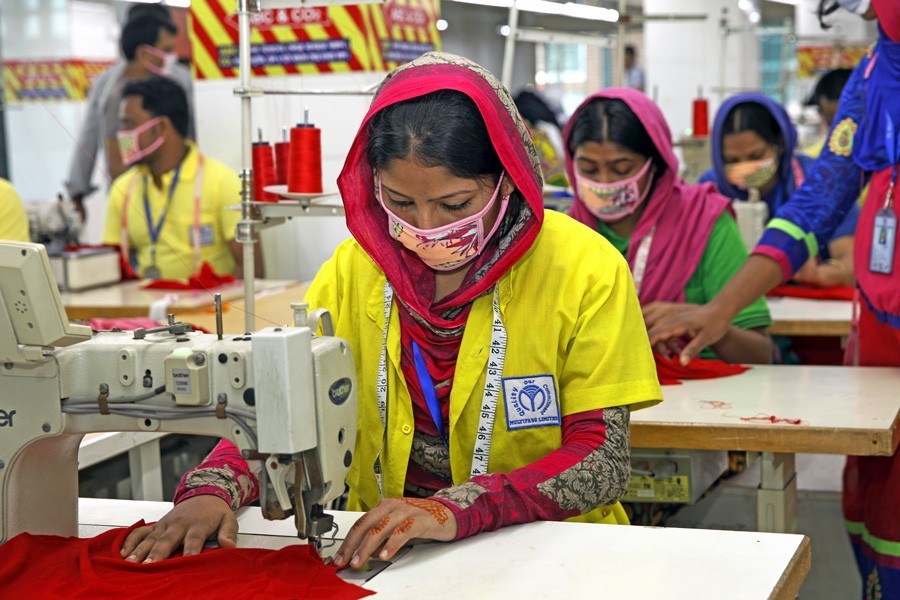Figures can be deceiving. Those may not represent true pictures, always. A case in point is the country's earning from apparel exports. In the fiscal year (FY) 2018-19, it fetched US$34.13 billion from export of both woven and knit garments. The amount represented more than 84 per cent of the country's total export earnings. After taking into account the raw material imports valued at US$12.17 billion for the sector, its net earnings stood at US$ 21.96 billion. So, the RMG sector could add 64.33 per cent value to products it exported in FY'19. That was, however, the highest rate of value addition in seven years.
The rate of gross value addition to RMG exports during the last six FYs fluctuated, but it was above 60 per cent. In the last fiscal it was over 64 per cent. The rate was impressive given the country's inability to add sizeable value to apparel export items in the initial years of the country's entry into the global apparel market. But even after four decades of its entry, the sector's significant dependence on imported raw materials and accessories does indicate to some basic weaknesses in relation to the development of backward linkage industries and product diversification.
As far as accessories are concerned, nearly 90 per cent are produced in the country. Similarly, 80 to 90 per cent fabrics for knit exports are produced locally. But the situation in the case of woven garments is entirely reverse. About 70 per cent of woven fabrics are imported notwithstanding the fact that the country has a large number of spinning and woven textile units. However, most of these units are incapable of producing quality woven fabrics. This remains one of the key hurdles with regards to raising the rate of value addition up to the desired level.
It is, thus, important to have large textile units that are capable of producing quality woven fabrics. But, the local entrepreneurs are least interested in such ventures that are highly capital-intensive. Moreover, the high cost of doing business here does also scare the prospective investors away. In such a situation, luring foreign investors is seen as the most viable option. The ongoing relocation of Chinese industries in the event of US-China trade war and the hike in domestic industrial wages in that country do offer an opportunity to attract the Chinese investors. Their entry would help raise the value addition content in apparel exports. The policymakers would have to toil hard to bring in the Chinese investors.
Bangladesh apparel exports do have another limitation---greater dependence on cotton-based items that are usually low-cost ones. There have been little efforts on the part of both policymakers and the exporters to produce high-value items using man-made fibres. This has much to do with product diversification, a much-discussed issue in the country's business arena. There is no denying that the apparel sector has made notable progress in areas of value addition, but more can be done in raising the same as well as boosting export earnings. Strengthening of backward-linkage industries further and diversification of apparel export items remain to be key factors here.


